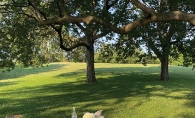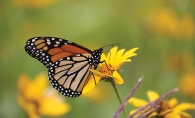It might drift in as a slow dawning awareness, or it could hit you with lightning clarity. Each spring, Maple Grove residents are delighted as migrating birds arrive in bunches. Then poof—they vanish. Think of them as temporary jewels in our yards, gardens and treetops, and on our ponds and small lakes. They’re in the air, briefly at the backyard birdfeeder, or in flocks on the pond, and they don’t look like the typical year-round residents or the summer birds that nest here. Who are those guys?
March
Some of the earliest birds that pass through on their way to nesting grounds farther north are the kinglets. These tiny, wren-sized birds arrive as our snow begins to melt in March. They can survive nighttime temperatures as low as -40 degrees F, so the occasional March cold snap or snowfall is no problem. Kinglets are frenetic little insect-eaters, jumping from branch to branch high in the trees, or hovering to reach the undersides of leaves. Two kinds of kinglets typically pass through Maple Grove in March: the ruby-crowned kinglet and the golden-crowned kinglet.

Photo courtesy of Jon Swanson
Madeleine Linck, Three Rivers Park District wildlife technician, says, “The ruby-crowned kinglet is a perky little bird often seen fluttering its wings as it searches for early spring insects in neighborhood trees. For a little bird, it makes up for [its size] with its long, beautiful song that might be described as a musical trill.” To hear that song and other birdcalls, visit allaboutbirds.org.
You might not see the color of their crowns, since they seldom sit still, but you’ll recognize them by their activity.
April
Sometime in April, ponds will teem with a flock of small black and white ducks. Those are the buffleheads passing through. Buffleheads are North America’s smallest diving duck. Their brief trips underwater and their black and white head markings help us recognize them. The male has a large white patch on the back of his head all the way to his eyes. The black on his head is actually an iridescent green and purple, very attractive to female buffleheads, but it looks black from a distance. The female has a white cheek patch that goes from just below her eye toward the back of her head.
Kristin Hall, bird area coordinator with Audubon Minnesota, calls these distinctive pond visitors “gateway ducks.” She notes that they’re so different from the usual summer ducks that even non-birders take notice: “Hey! That duck’s not a mallard. What is it?” She notes that this passing curiosity can inspire would-be birders.
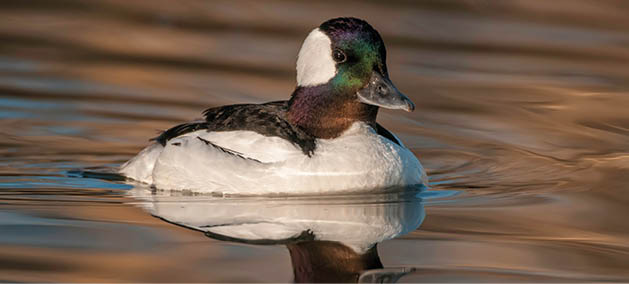
Photo courtesy of Mike Lentz
Like wood ducks, buffleheads nest each summer in tree cavities. They’re small enough to fit into abandoned holes created by Northern flickers and, for this reason, tend to live in the same areas where flickers are found. They don’t leave the water except when nesting and leading new ducklings to the water.
Look for their distinctive black and white heads diving and bobbing up on your local pond when they pass through, generally in April.
May
My favorite migrating bird is the yellow-rumped warbler, informally known as the yellow-butt. “This is our earliest warbler in the spring and one of the latest to pass back through in the fall,” Linck says. “They nest in northern Minnesota. The yellow rump is a very good field mark for both males and females.”
These colorful little birds, about the size of a finch, show up in large groups and can’t be missed in backyards and along walking paths throughout Maple Grove in May. By the time they pass through our neighborhood, both the males and females are already decked out in their best breeding colors: a crisp mix of bright yellow, charcoal gray, black and white.
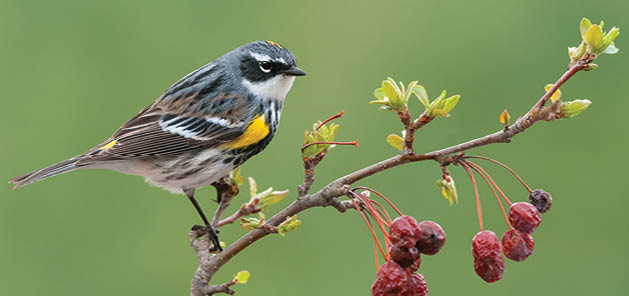
Photo courtesy of Mike Lentz
They’re busy in their quest for insects to fuel their trip north for nesting, but are not frenetic like the kinglets. You’ll see these warblers on the ground, in the trees, and in the air; first a few, then many, and then suddenly none. I always miss them when they’re gone.
All these birds, and many more, are harbingers of spring, just when we need them the most. We’re anxious to leave the cold behind, and these small migrants assure us that summer is on its way.
The yellow rump is distinctive as they fly away from you, but you’ll also see yellow patches on their wings.
Birding Resources:
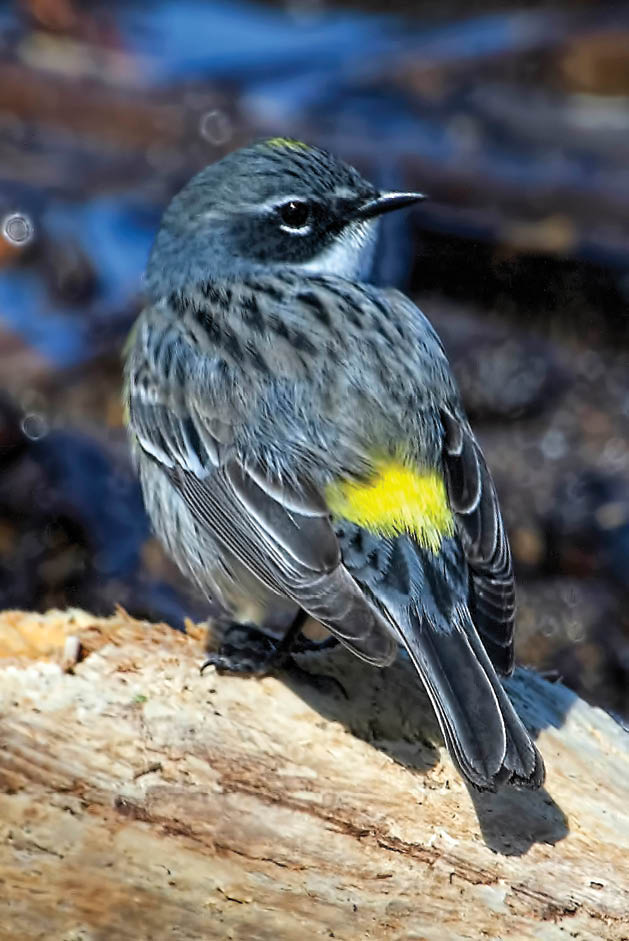
Photo by David Tallman
Ready to make more feathered friends? Photos, videos, audio clips and bird-cam footage are available online:








